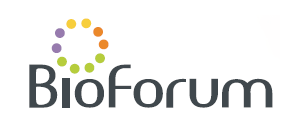Multiplex pathogenic bacteria detection in milk using nanoparticle-assisted porous silicon-based SERS microarray biosensor
Giorgi Shtenberg, ARO, Volcani Institute , Rishon Lezion, Israel (giorgi@agri.gov.il)
Divagar Muthukumar, Aro, Volcani Institute , Rishon Lezion, Israel
Omer Tamari, Biotechnology, Jerusalem, The Hebrew University Of Jerusalem
The ongoing threat of milk-related pathogens poses a substantial risk to human health, necessitating the development of efficient detection methods. This study explores the creation of a SERS based multiplex biosensor to meet the demand for simultaneous detection of multiple pathogens, thereby reducing measurement time and enhancing food safety. The biosensor utilizes an indirect immunoassay, leveraging gold nanoparticles as selective Raman reporters and a silver nanoparticle-modified porous silicon microarray (Ag-pSi) as the SERS substrate. In the initial phase, experiments focused on optimizing physical parameters and conditions, leading to the successful construction of an assay capable of detecting bacterial cells, specifically E. coli, S. aureus, and B. cereus, within the concentration range of log 1 to log 5 CFU/mL, with detection limits of 6, 6, and 5 CFU/mL, respectively. The assay's selectivity was validated through experiments involving common interfering pathogens. Subsequently, the developed assay was applied to detect specified bacterial cells spiked in various milk qualities and presented recovery values ranging from 85% to 105%. Notably, the overall assay timing was maintained under 90 minutes. These findings underscore the efficacy of the multiplex detection approach for bacterial pathogens in diverse samples, representing a significant advancement toward the realization of a portable SERS biosensor.
Organized & Produced by:

POB 4043, Ness Ziona 70400, Israel
Tel.: +972-8-9313070, Fax: +972-8-9313071
Site: www.bioforum.org.il,
E-mail: hagit@bioforum.co.il